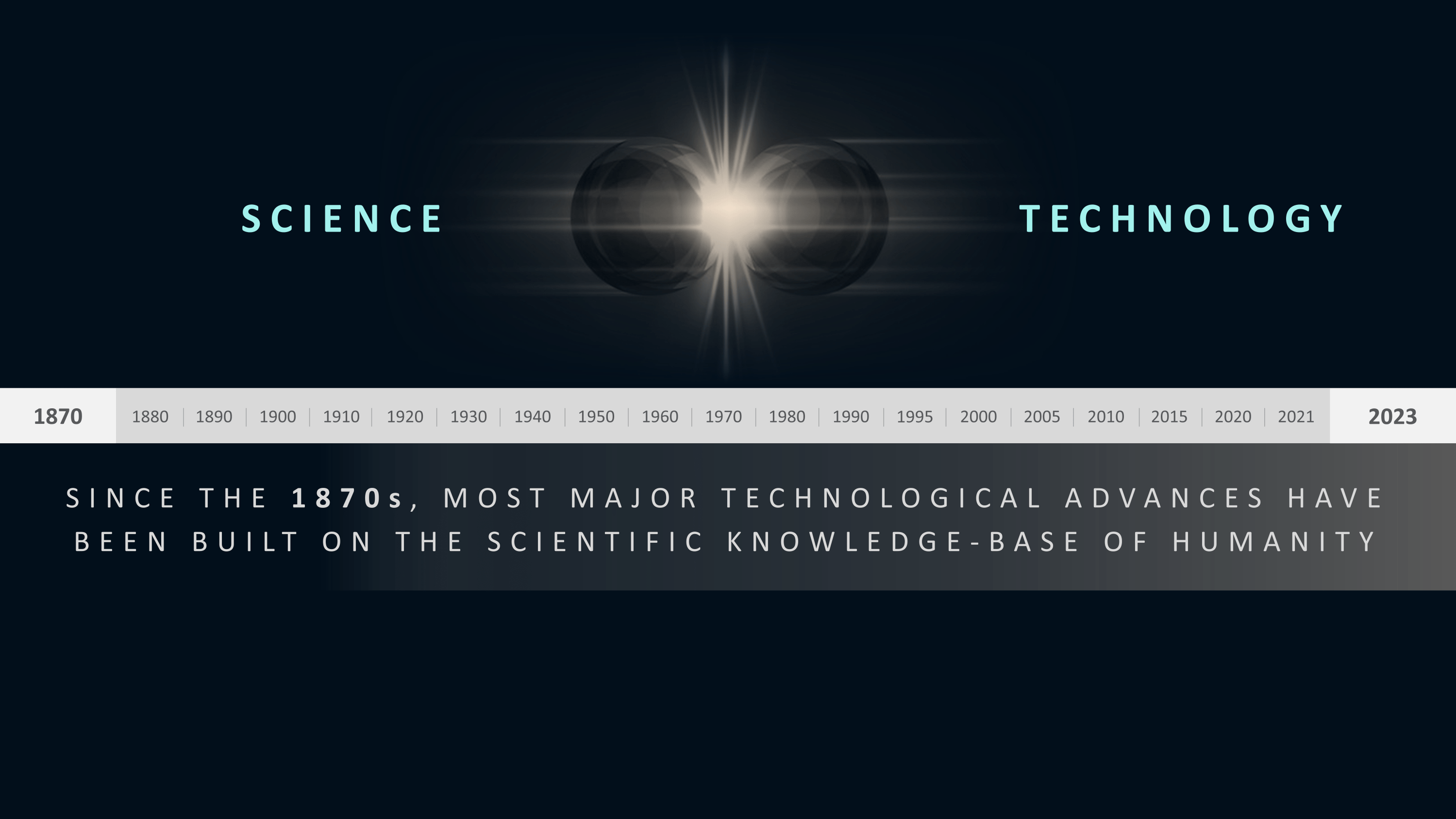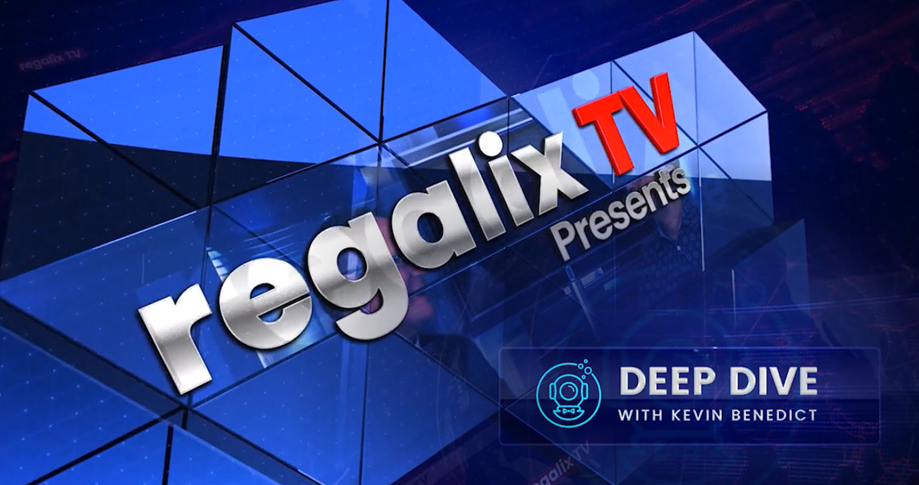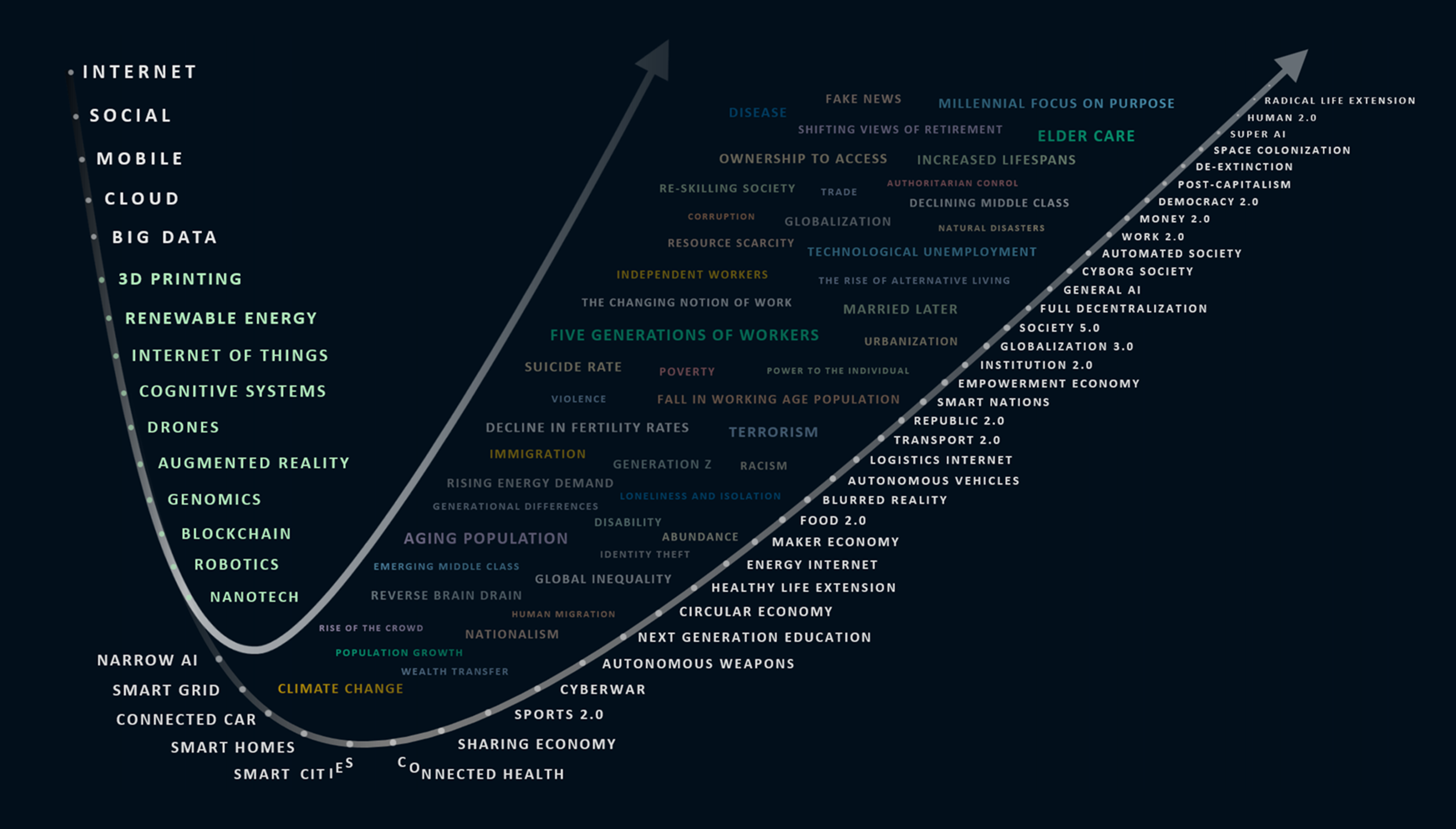The second industrial revolution ushered in an era of vertical integration, where companies built empires within clearly defined industries. Today, however, a new revolution is upon us – one driven by an explosion in the possibility space. Scientific and technological advancements are happening at an unprecedented pace, blurring the lines between disciplines and creating opportunities that transcend traditional industry boundaries. This is giving rise to a fascinating phenomenon: horizontal ecosystems.
Continue readingScience
Navigating The Horizons Of 2024: Thoughts Across Diverse Fields

As we stand on the precipice of 2024, a year brimming with potential and uncertainty, experts across various domains will offer their insights into the shape of things to come. From scientific breakthroughs to geopolitical shifts, from societal transformations to environmental challenges, these insights paint a multifaceted portrait of the year ahead. I’ll add my thoughts to the conversation. The uncertainty that exists across these domains adds to the difficulty in understanding possible futures. It is convergence that occurs across them that illuminates the possibilities.
Continue readingReimagining Science

It was the eventual convergence of science and technology that ushered in a period of unprecedented human development. This synergistic relationship exploited two historical pillars of advancement: knowledge and invention. I’ve explored how the growth of knowledge drove invention throughout history, and how that combination elevated the standard of living. Now, in the age of AI, we must consider the possibility of a new era of human development. This time, the possibility space is very broad, as AI is likely to reimagine science.
Continue readingWhy Ecosystems? Why Now?
For at least seven years, the concept of ecosystems has been discussed and defined in various ways, while sometimes applied in a context that dilutes its eventual impact. At the highest level, an ecosystem is a network of connected stakeholders interacting in ways that create and capture value for all participants. Why has this ecosystem phenomenon emerged now and why do people expect it to drive structural change? Once again, history may provide an answer.
Continue readingThree Mind-Blowing Predictions – Michio Kaku
What lies in store for humanity? Theoretical physicist Michio Kaku explains how different life will be for your descendants—and maybe your future self. Theoretical physicist Michio Kaku looks decades into the future and makes three bold predictions about human space travel, the potential of ‘brain net’, and our coming victory over cancer. Here is a brief summary – but be sure to check out the video.
Continue readingThe Journey: The Building Blocks Of The Future
My previous posts launched a series that will tell the full story of a reimagined future. Described as a journey through the looking glass, the story began with a series description and a look back in time. The series continues, with each post featuring a piece of our journey. We explored the extreme uncertainty of the future in the last post. In this post, I will now dive deeper into the building blocks of the future.
Continue readingSignals To Watch for In 2022
Understanding possible futures is all about signals – and there is no shortage of them. A dominant conversation these days is focused on how to sense these signals, derive foresight, and respond. While foresight helps us see possible futures, the next challenge is moving from a high degree of uncertainty to some level of actionable certainty. That step in the process is a combination of science and art. Signals manifest themselves through the current and emerging building blocks that shape our future – and they are coming at us from every corner of society. Since I don’t believe in prediction, I will focus my year-end post on signals to look for in 2022 across four key areas.
Continue readingA Growing Number Of Building Blocks Make Prediction Impossible
I have been of the opinion that the number of building blocks across multiple domains makes prediction impossible. As a result, understanding the future is about rehearsing it versus predicting it. That ambiguity makes many uncomfortable. Humans like certainty, but we live in a world that is very uncertain. Many will argue that this has always been the case. But it should be increasingly clear that periods like this emerging phase transition have only occurred a handful of times in human history. We want to rely on methods that have proven effective in the past. We find comfort in applying those methods to drive a degree of certainty. One need only look at these building blocks to see rehearsal is the only way to identify possible futures.
Continue readingIs The Digital Era Over?
I had a discussion last week that focused on a post-digital world. It was an open question about the state of digital and the related transformation journey. Although the digital maturity of organizations is not where I envisioned it – and Covid-19 underscored the point – digital should be a foundational piece of a bigger story. The continued digital discussion ignores the bigger contributions of science and the boardroom conversations around purpose and innovation. A recent article goes one step further in declaring that the digital era is over, and we are in a New Era of Innovation. In it, Greg Satell makes the exact argument I made above.
Continue readingFuture Today Institute: 2021 Trends Report
Each year the Future Today Institute releases a very comprehensive trends report during SXSW. In announcing this year’s report, Founder Amy Webb had this to say:
The cataclysmic events of the past year resulted in a significant number of new signals. As a result, we’ve analyzed nearly 500 tech and science trends across multiple industry sectors. Rather than squeezing the trends into one enormous tome as we usually do, we are instead publishing 12 separate reports with trends grouped by subject. We are including what we’ve called Book Zero, which shows how we did our work. There is also an enormous, 504-page PDF with all content grouped together as one document.
Amy Webb – Future Today Institute
These reports allow us to explore weak and strong signals in a way that helps us envision possible futures. Given the high levels of uncertainty, the sheer number of building blocks, and the Convergence occurring across domains, exploration, learning, and dialog are as critical as ever. You can download the report Here. There is a lot to digest – but that is exactly the point. Thanks to Amy and her team for their continued support of this exploration process.
The Exponential Era

Much of what is driving our emerging future is the exponential pace of science and technology. When combined with the Convergence of building blocks that span multiple domains, it becomes easy to see why the world seems to be moving so quickly. In a recent book titled “The Exponential Era”, authors David Espindola and Michael Wright explore this phenomenon and present an approach for surviving in a future that is moving so fast. This story is about an overwhelming number of building blocks and the rate at which they are converging. As this happens, long-standing beliefs and institutions are rendered obsolete. I had the honor of providing a quote for the book jacket:
Continue readingCan Technology Address The Racism Problem?
I recently received a note from one of my readers regarding racism. As someone who has leveraged my anchor visual, he recognized racism as a societal issue in the middle of it. As depicted, societal issues create tension that drives the progression of two curves: the science and technology foundation, and the future scenarios spawned by convergence across the visual. This tension happens in both directions, as the curves also impact the path of society. This individual explored one of those tensions, namely, the use of technology to address systemic racism. In his words: “I find the problem to be one of the most difficult to solve through just laws and politics. I really think that technology can help.”
Eradicating Disease and Disability
 There’s been a lot of talk lately about the impact of Artificial Intelligence on Healthcare. An aging population is likely to place even more stress on a costly and ineffective healthcare system. There are other new innovations that are likely to improve healthcare efficiency and offer new ways to address global healthcare challenges. One such innovation is described in this Recent Article authored by science editor Jackson Ryan.
There’s been a lot of talk lately about the impact of Artificial Intelligence on Healthcare. An aging population is likely to place even more stress on a costly and ineffective healthcare system. There are other new innovations that are likely to improve healthcare efficiency and offer new ways to address global healthcare challenges. One such innovation is described in this Recent Article authored by science editor Jackson Ryan.
The Future is Faster than you Think
In a recent Interview, Peter Diamandis talks about the rapid pace of innovation and how it is about to get a lot quicker. Diamandis has always had a positive outlook on the path of innovation – and although I share his optimism, there is no disputing societies need to map that Path. His ability to explore possible futures is very instructive, as leaders everywhere must understand the potential to advance our human development.
Mr. Diamandis believes we will see more change in the coming decade than we have in the last 100 years. He speaks of the Convergence of building blocks in the science and technology domains which contribute to the quickening pace. I’ve explored this notion of intersections in the past, but with a broadened focus. Convergence is occurring across multiple domains, not just science and technology. That additional convergence across society, economy, geopolitics, environment, philosophy, and business introduces a set of additional accelerants – but they also create obstacles.
In looking at possible futures, here are some of his predictions:
More Scenarios Added to our Emerging Future
I periodically add more future scenarios to this visual that attempts to describe all the dots that are connecting to create our future. This future is complex, emerging from the combination of new and existing building blocks – a dynamic that enables the rapid pace that society is experiencing. The visual is described in detail Here.
I have added two new Future Scenarios to the visual: Society 5.0 and Smart Nations. I have written about both recently. Each scenario is individually impactful – but the combinatorial effect is massively transformative. Tracking scenarios in an effort to See their path is the only hope in understanding their impact.
A Deep Dive with Kevin Benedict
 I had the pleasure of joining Kevin Benedict on RegalixTv for a conversation about the Future. This 20 minute conversation focused on making sense of this fast changing world of ours, identifying those things that require our attention today, rehearsing the future, and more. Click the visual to view this short video discussion.
I had the pleasure of joining Kevin Benedict on RegalixTv for a conversation about the Future. This 20 minute conversation focused on making sense of this fast changing world of ours, identifying those things that require our attention today, rehearsing the future, and more. Click the visual to view this short video discussion.
Rehearsing the Future
 I had the pleasure of participating on a radio show titled Geeks, Geezers, and Googlization. Hosts Ira Wolfe and Keith Campagna did a great job of facilitating our discussion about the future. Check out their Summary of our conversation, and/or listen to our conversation via this rebroadcast.
I had the pleasure of participating on a radio show titled Geeks, Geezers, and Googlization. Hosts Ira Wolfe and Keith Campagna did a great job of facilitating our discussion about the future. Check out their Summary of our conversation, and/or listen to our conversation via this rebroadcast.
The Story of Our Emerging Future
Story telling is the most effective way to communicate – and in times of complexity, uncertainty, and rapid pace, it becomes even more critical. Telling stories about the future requires a broad view of an increasing number of building blocks. The visual I use attempts to look at these building blocks and the various ways they combine to enable future scenarios. The scenarios themselves are combinatorial – converging on one and other in ways that transform how we think about the future. A deeper explanation of the visual can be found Here.
The Convergence of Science and Technology
In looking at transformative periods throughout history, it is apparent that Convergence was a critical driver of change. While I am still hopeful of the ultimate convergence across societal, political, environmental, philosophic, economic, and business domains, it is clear that convergence is already occurring in the science and technology domains. This synergistic relationship where advances in one domain fuels rapid advances in the other is the force behind our rapid pace. As we saw in the Poll that looked at the catalysts that drive convergence, it is this rapid pace of innovation that many believe will ultimately drive it. This initial convergence is altering long-held Beliefs and Intuitions – eventually forcing convergence across the other domains.
The Ready Room
I had the recent pleasure of talking with Richard Frederick about a number of topics regarding the future. Richard runs a Podcast called The Ready Room; an idea driven by his concern over the decline of civil discourse and the ideological barricades with which so many have surrounded themselves. In his words: “If only we could come out from behind our political fortresses and talk openly with one another and truly seek to open our minds to change, we could regain a shared civic trust.”
The Ready Room is Richard’s way of reaching out to others to begin this discourse. I was happy to be included in this process. You can listen to our discussion below.

